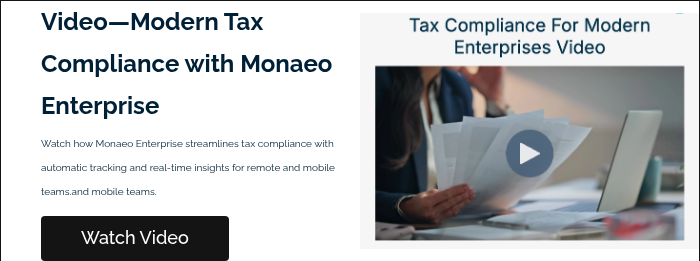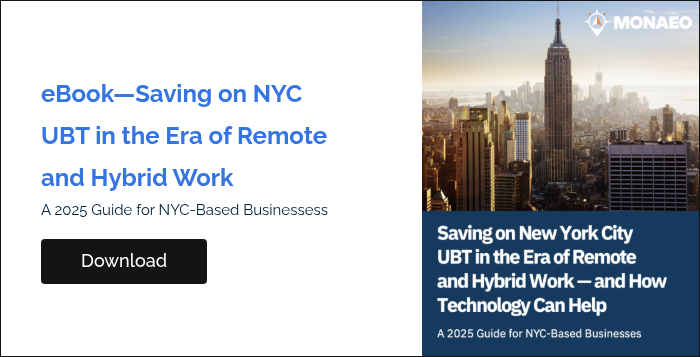What Triggers Permanent Establishment?
It doesn’t take much to trigger PE risk. Here are some surprisingly common scenarios:
- An employee works remotely from Spain for a few months
- A U.S.-based exec logging in from Canada during a series of trips
- A sales rep that lives just over the border and regularly meets clients in-person
- A temporary project becomes a long-term engagement abroad
In all of these cases, the company might suddenly owe taxes in that country, even if they’re not formally registered there.
Why This Matters More Now
In the old days, it was easy to track where business was being done. Now? Not so much.
With hybrid work, relocations, and cross-border hiring, tax authorities are watching more closely. And they’re cracking down.
If your company unknowingly creates a permanent establishment, you could face:
- Unexpected tax bills
- Interest and penalties
- Double taxation (yep, taxed at home and abroad)
- Reputational risk from noncompliance
How to Stay Ahead of PE Risk
Good news! PE risk is manageable… if you can see it coming. Here’s how Monaeo Enterprise helps businesses stay out of trouble:
Automatically Track Where Work Is Happening
Guesswork is dangerous. Monaeo captures real-time location data so you know where employees are actually working, not just where they’re supposed to be. That visibility is key to spotting potential PE issues early.
Set Thresholds and Get Alerts
Most countries have day-count thresholds for when PE rules kick in. With Monaeo, you can track those thresholds by location and get alerts before anyone crosses a line.
Run Pre-Travel Risk Checks
Before someone goes abroad for a project or an extended trip, run a pre-travel risk assessment. Monaeo helps you understand tax exposure up front, so you’re not caught off guard down the road.
Keep a Clean Audit Trail
If you’re ever audited, Monaeo has your back. The platform automatically creates audit-ready records that show exactly when and where work happened, saving your team hours (and your company thousands).
Why PE Isn’t Just a Tax Problem
It’s easy to think of this as a finance issue, but it affects HR, legal, mobility, and operations, too.
From employee relocations to hybrid work policies, every team plays a role. That’s why companies use Monaeo to break down silos and centralize compliance, so everyone’s on the same page.
Bottom Line: Don’t Let PE Catch You Off Guard
In today’s world of remote work and cross-border collaboration, permanent establishment risk is real, and on the rise.
But with the right tools, you can avoid the “uh-oh” moment that comes with a surprise tax bill. Monaeo Enterprise gives you the visibility, alerts, and data you need to confidently manage your global workforce without triggering compliance issues.
One platform. Zero blind spots. Peace of mind.
Ready to see Monaeo in action? Request a demo and learn how we help businesses like yours stay compliant—no matter where work happens.
FAQs: What You Need to Know About Permanent Establishment (PE)
1. What is permanent establishment (PE) in international tax?
Permanent establishment, often called PE, is when your business has enough of a presence in another country that the local tax authority says, “Hey, you owe us corporate taxes here too.” It doesn’t always mean opening an office; even having employees or agents working abroad can count.
2. What triggers permanent establishment risk?
There are a bunch of ways you can accidentally trigger PE, like employees working from another country, signing contracts while traveling, regularly doing sales or business in a new region, or having someone represent your company abroad. Even just one of these things can create tax obligations in that country.
3. Can remote work create a permanent establishment?
Yes, and this is becoming a big issue as more people work from anywhere. If a remote employee is generating revenue, managing clients, or operating long-term from another country, they could create a taxable presence for your business there.
4. How many days can an employee work in another country without creating PE?
There’s no one-size-fits-all answer. Some countries have specific thresholds (like 183 days per year), but others look at things like job duties or whether revenue is being generated. It’s not just about time, it’s about what the employee is doing while they’re there.
5. Is permanent establishment triggered during a continuous amount of time or is it calculated over a series of trips?
It can be either! Some countries count total days worked in their jurisdiction, even if they’re split across multiple short trips. Others look at continuous stays. The key is tracking both time and activity, because both can add up to PE.
6. What are the consequences of creating a permanent establishment?
In short: unexpected tax bills. But it doesn’t stop there. You could also face: late payment penalties or interest, double taxation (paying in two places), time-consuming audits reputational damage with tax authorities
7. How can businesses avoid triggering permanent establishment?
The best defense is visibility. Know where your people are working, for how long, and what they’re doing. Tools like Monaeo Enterprise help automate location tracking, flag risks early, and keep you compliant, so you’re not relying on spreadsheets or guesswork.
8. What is the difference between permanent establishment and nexus?
Think of it this way: PE applies to international taxes, while nexus is a similar concept used within the U.S. Both mean that your business has created a taxable presence, but in different jurisdictions.
9. Does having a dependent agent in another country cause PE?
It can. If someone is regularly acting on behalf of your company, like closing deals, signing contracts, or even just negotiating, they may be considered a “dependent agent,” which is a common PE trigger.
10. Can using contractors or freelancers abroad create PE?
Possibly. If they’re acting like full-time employees, or regularly representing your business, a tax authority might treat them as a dependent agent, which could trigger PE. It depends on the level of control and the nature of the work.



